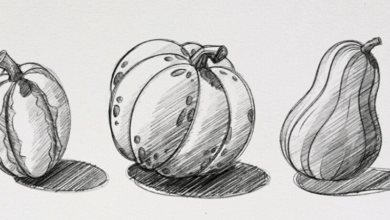The Pros and Cons of Virtual DJing: Is it the Right Choice for You?

Introduction
The world of DJing has evolved significantly over the years, with technological advancements revolutionizing the way DJs perform and interact with their audiences. Traditional DJ setups involved turntables and physical vinyl records, but with the emergence of digital technology, Virtual DJing has gained immense popularity. Virtual DJing refers to using software and controllers to emulate the functionality of traditional DJ equipment. This article explores the pros and cons of Virtual DJing to help you determine if it’s the right choice for you.
Pros of Virtual DJing
Cost-effectiveness:
One of the most significant advantages of Virtual DJing is its cost-effectiveness. Traditional DJ setups can be quite expensive, requiring expensive turntables, mixers, and vinyl records. virtual dj In contrast, Virtual DJing allows you to utilize affordable software and controllers, reducing the initial investment significantly. Additionally, you can access a wide range of music tracks and samples online, eliminating the need to purchase physical records.
Portability and Convenience:
Virtual DJing enables DJs to carry their entire setup in a laptop and a compact controller. This portability allows DJs to perform in various venues without the hassle of transporting bulky equipment. Moreover, with Virtual DJing, there’s no need to lug around crates of vinyl records, making setup and teardown times much quicker and more convenient.
Extensive Music Library:
Virtual DJing platforms offer access to vast music libraries, giving DJs a wide selection of tracks and genres to choose from. This variety enables DJs to cater to diverse audiences and adapt their sets to suit the mood and preferences of the crowd.
Integration with Digital Production Tools:
Virtual DJing software often integrates seamlessly with digital music production tools. This synergy enables DJs to remix and produce tracks on-the-fly during their performances, adding a unique touch to their sets and enhancing creativity.
Real-time Visual Feedback:
Virtual DJing software often provides real-time visual feedback, allowing DJs to monitor audio waveforms, track tempos, and cue points. This feature aids in beat-matching and synchronization, ensuring smooth transitions between songs.
Diverse Effects and Filters:
Virtual DJing offers an array of effects and filters that DJs can apply to their mixes, enhancing the overall performance. From echo and reverb to phasers and flangers, these effects can add depth and dynamics to the music, elevating the audience’s experience.
Cons of Virtual DJing
1. Lack of Tangible Experience:
For many traditionalists, the physical interaction with turntables and vinyl records is an essential aspect of DJing. Virtual DJing lacks this tactile experience, and some DJs may find it less satisfying or less authentic compared to traditional setups.
- Reliance on Technology:
Virtual DJing heavily relies on technology, specifically computers and software. Technical glitches, software crashes, or hardware malfunctions can disrupt a DJ’s performance, potentially leading to frustrating situations during live shows.
- Learning Curve:
While Virtual DJing can be more accessible for beginners, it still requires a learning curve to master the software and controllers effectively. DJs must invest time in understanding the software’s intricacies and mapping controllers to suit their preferences.
- Dependency on Electricity and Connectivity:
Unlike traditional setups that don’t require electricity, Virtual DJing needs a stable power source for laptops and controllers. Additionally, a stable internet connection might be necessary for accessing online music libraries or software updates, making outdoor performances or venues with poor connectivity challenging.
- Loss of Nostalgia:
For those who grew up in the era of vinyl records and turntables, Virtual DJing may lack the sentimental value and nostalgic charm associated with traditional setups. The tactile experience of physically handling records can evoke powerful emotions and memories that Virtual DJing cannot replicate.
- Less DJ Persona Differentiation:
With Virtual DJing, the visual distinction between DJs may diminish, as most setups use similar laptops and controllers. Traditional DJ setups often featured unique turntables and customizations, allowing DJs to showcase their personalities and styles through their equipment.
Conclusion
Virtual DJing offers a range of benefits, including cost-effectiveness, portability, and access to extensive music libraries, while also providing real-time visual feedback and diverse effects. However, it comes with drawbacks such as the lack of tangible experience, technical reliance, and potential connectivity issues.
Ultimately, whether Virtual DJing is the right choice for you depends on your preferences, style, and comfort with technology. Some DJs may embrace the convenience and possibilities that Virtual DJing offers, while others may prefer the authentic feel of traditional setups. Regardless of your choice, it’s essential to stay true to your passion for music and ensure that your performances resonate with your audience, regardless of the DJing method you choose.





